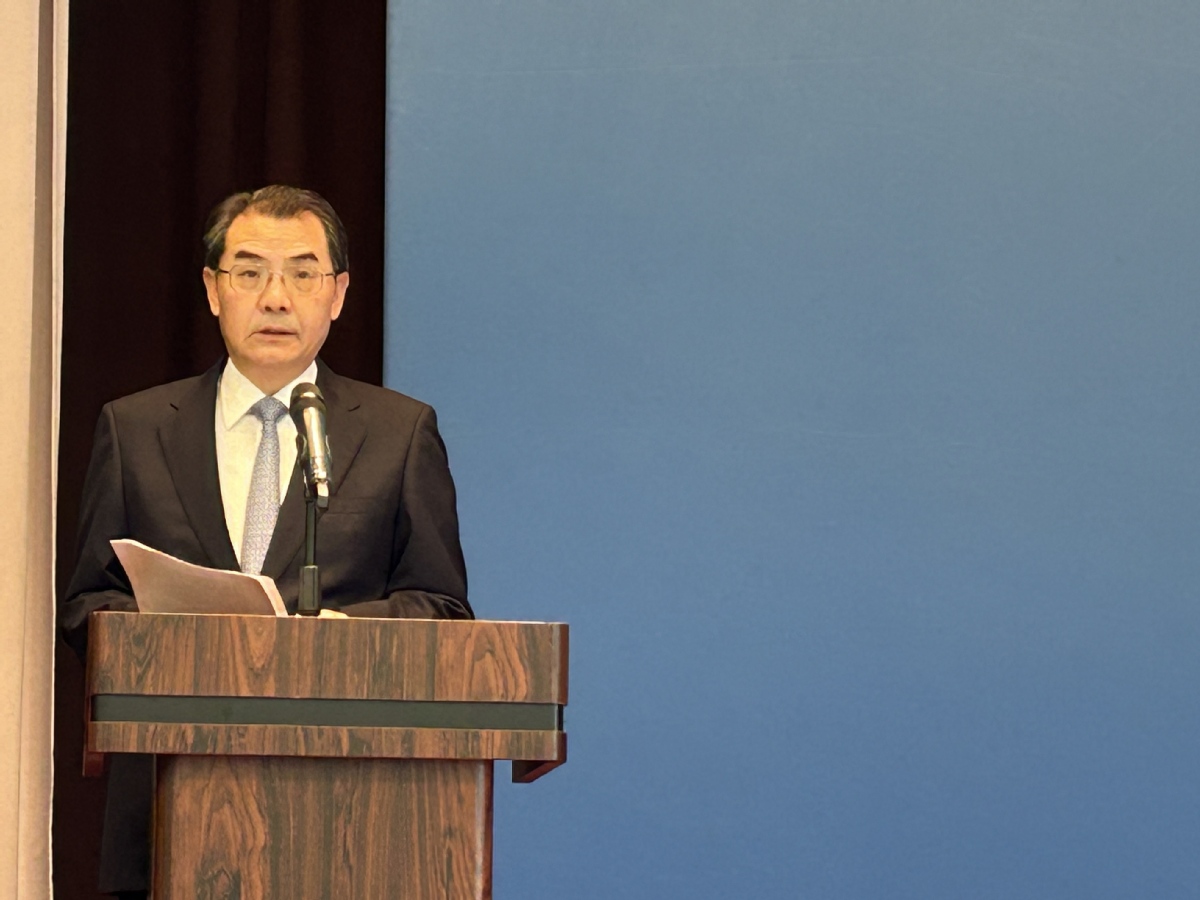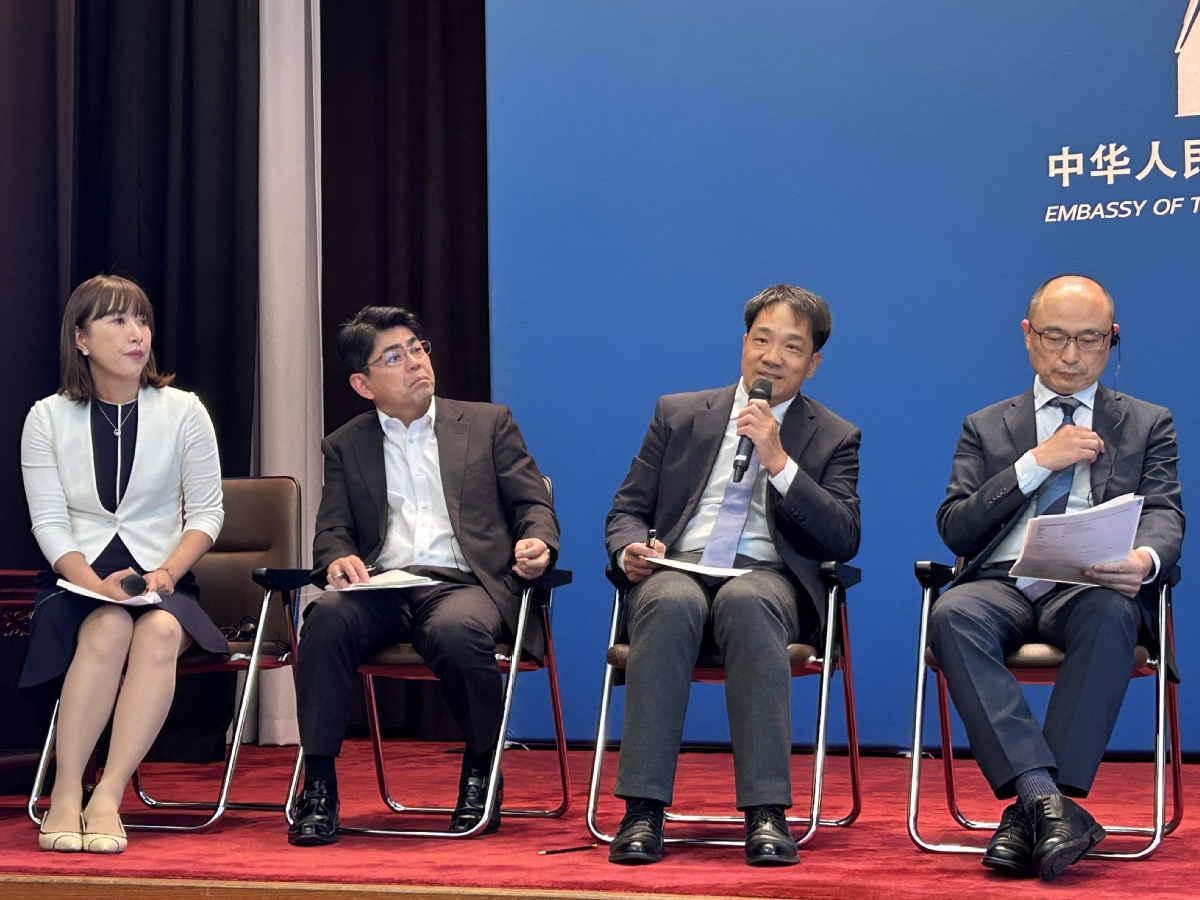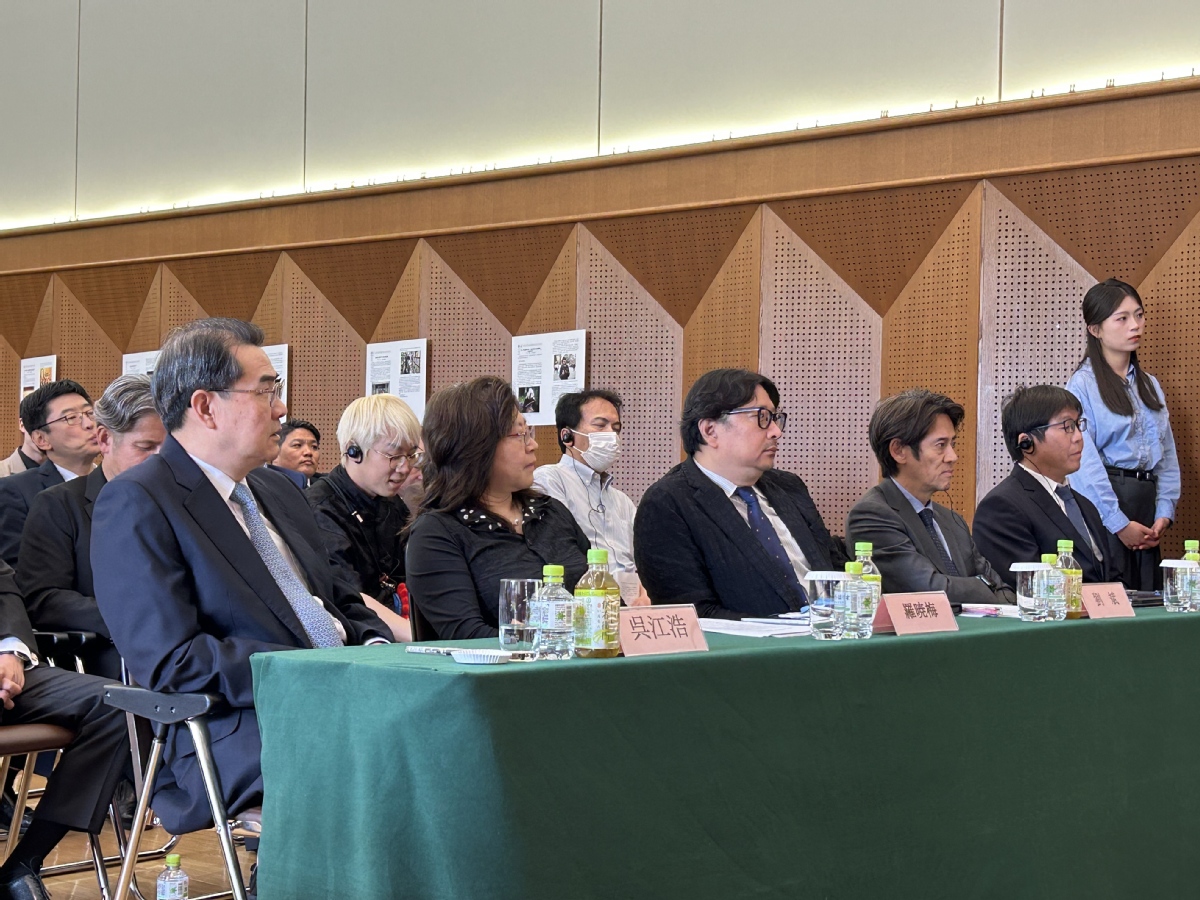
Chinese Ambassador to Japan Wu Jianghao delivers his remarks at a China-Japan media salon organized by the Chinese embassy in Tokyo on June 12. Jiang Xueqing/China Daily
Media professionals and diplomats called on Japanese and Chinese media to pursue objective, balanced and fair reporting, encourage diverse and engaging coverage that fosters deeper mutual understanding between the two countries, and make effective use of social media to broaden the impact of these efforts.
Speaking at a China-Japan media salon hosted by the Chinese embassy in Japan on Thursday, Chinese Ambassador Wu Jianghao underscored the vital role of the media in fostering mutual understanding, stressing its function as a bridge in advancing bilateral relations.
"We hope that thoughtful voices in the media from both countries will pursue objective, balanced and fair reporting, and commentary," Wu said, "and thereby contribute positively to the healthy and stable development of China-Japan relations."
At the end of last year, the high-level consultation mechanism on people-to-people and cultural exchanges between China and Japan was relaunched. Both countries agreed to strengthen exchanges and cooperation between media and think tanks, with the shared goal of improving public opinion and the environment for public opinion.
Takeshi Hisanaga, an editorial writer at The Nishinippon Shimbun, a Japanese daily newspaper, expressed regret that few Japanese today feel a sense of closeness toward China.

Xinhua News Agency Tokyo Bureau Chief Feng Wuyong (second from right) presents an overview of Xinhua's coverage of Japan during the media salon held by the Chinese embassy in Tokyo on June 12. Jiang Xueqing/China Daily
"Sometimes, we dislike the other side without truly knowing or understanding them. We often fall into the trap of preconceived notions and fail to see the reality — and it's these biases that give rise to negative feelings," Hisanaga said.
He urged Japanese media to portray the many facets of China from a range of perspectives in a multidimensional way.
"In Japan, coverage of China tends to focus heavily on politics, especially during periods of tension in bilateral relations. While political developments in China are certainly important from a Japanese viewpoint, they are not the whole story. If we look only at politics, we miss the broader reality of China," he explained.
Hisanaga stressed the importance of conveying a more complete image of China, so that more readers will develop genuine interest — the first step toward deeper understanding.
Takahiro Yamagami, a reporter in the foreign news section of Kyodo News, noted that while politics and economics remain core themes in international reporting by traditional media, there is still ample room to expand coverage into areas like culture and pop trends.
Yamagami expressed hope that Chinese and Japanese media would collaborate to create a bilingual news website featuring content of shared interest. Potential topics, he suggested, could include pandas, Chinese entertainment, developments in artificial intelligence, robotics, and more.
He also stressed that the younger generation holds the key to the future of China-Japan relations.
"Young people don't respond to lofty slogans. They take a more practical view: 'Is this useful to me? Is it interesting?' They're not eating Chinese food to promote China-Japan friendship," he said. "As members of the media, we should share content that positively impacts people's lives and helps the public understand how trade with China can benefit Japanese society."
Shiro Nakamura, head of the Japan Newspaper Publishers & Editors Association, called on media in both countries to make a concerted effort to understand each other's positions and perspectives and to further strengthen exchanges between journalists.
"To achieve this, reporting must be rooted in facts and conducted with sincerity and fairness. This is a step toward fostering stable bilateral relations," he said.
Naoki Makita from the International News Division of NHK's News Department acknowledged that numerous unresolved issues persist in current China-Japan relations, often reflected in negative media coverage. Social media, he noted, has become an amplifier of such negativity.
"Still, we should not allow ourselves to be swayed by the tides of public opinion," Makita said. "It's essential that we remain grounded in our journalistic principles and focus on producing coverage that fosters deeper mutual understanding between China and Japan. At the same time, we must think carefully about how to leverage social media to expand the reach of these efforts."

Media professionals and diplomats gather for a China-Japan media salon hosted by the Chinese embassy in Tokyo on June 12. Jiang Xueqing/China Daily
YouTuber Yang Xiaoxi, who runs a channel with 220,000 subscribers — over 90 percent of them Japanese — shared an example of how social media can shape perceptions.
"A Japanese high school girl once sent me a message saying, 'Before I watched your videos, I had a negative view of China. But through your content, I came to genuinely understand the country and became interested in it. I decided to visit China and, to my surprise, really liked it. Now I've made the decision to study abroad there," Yang recalled.
Her story highlights the vital role that social media plays in shifting public opinion across borders.
"If traditional mainstream media serves as a grand gateway for China-Japan exchange, then social media provides countless small windows," she said. "Through these windows, people can share everyday moments and the many facets of each country with one another."
Starting in 2024, the Oriental New Newspaper, a bilingual Chinese-Japanese media outlet, in partnership with the Chinese embassy in Japan, launched an initiative that sends 100 Japanese university students to China annually for study tours, with the aim of fostering deeper exchanges between the younger generations of both countries.
Sun Ran, editor-in-chief of the Oriental New Newspaper, underscored the importance of expanding the reach of grassroots exchanges.
"People-to-people exchange is no longer confined to offline encounters — it increasingly functions as a medium for sharing information and generating emotional resonance among broader audiences," she said. "The positive influence of these efforts can ripple outward, inspiring more individuals to engage in meaningful cross-cultural exchange."